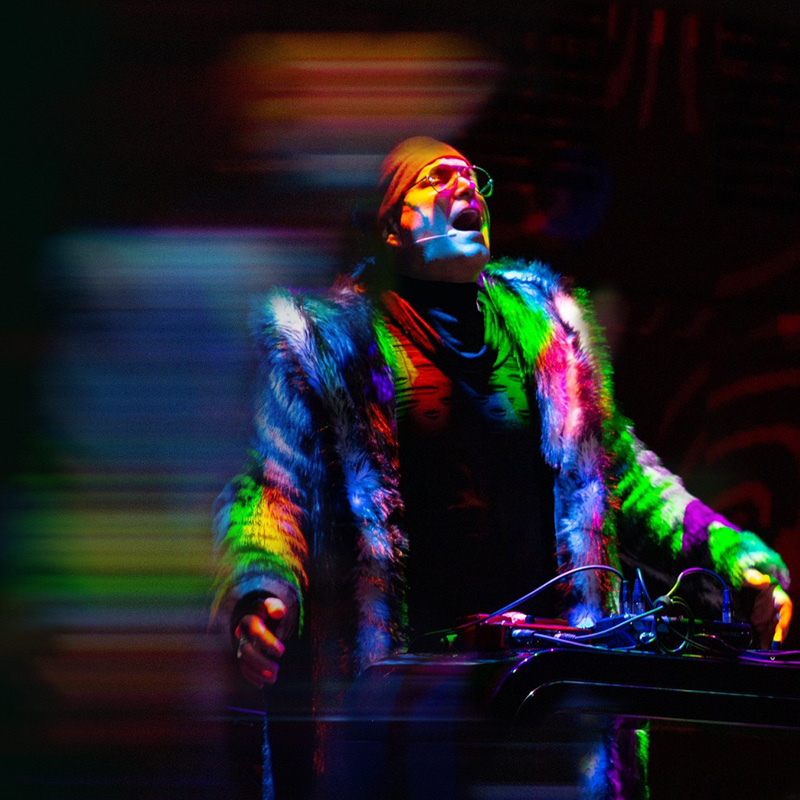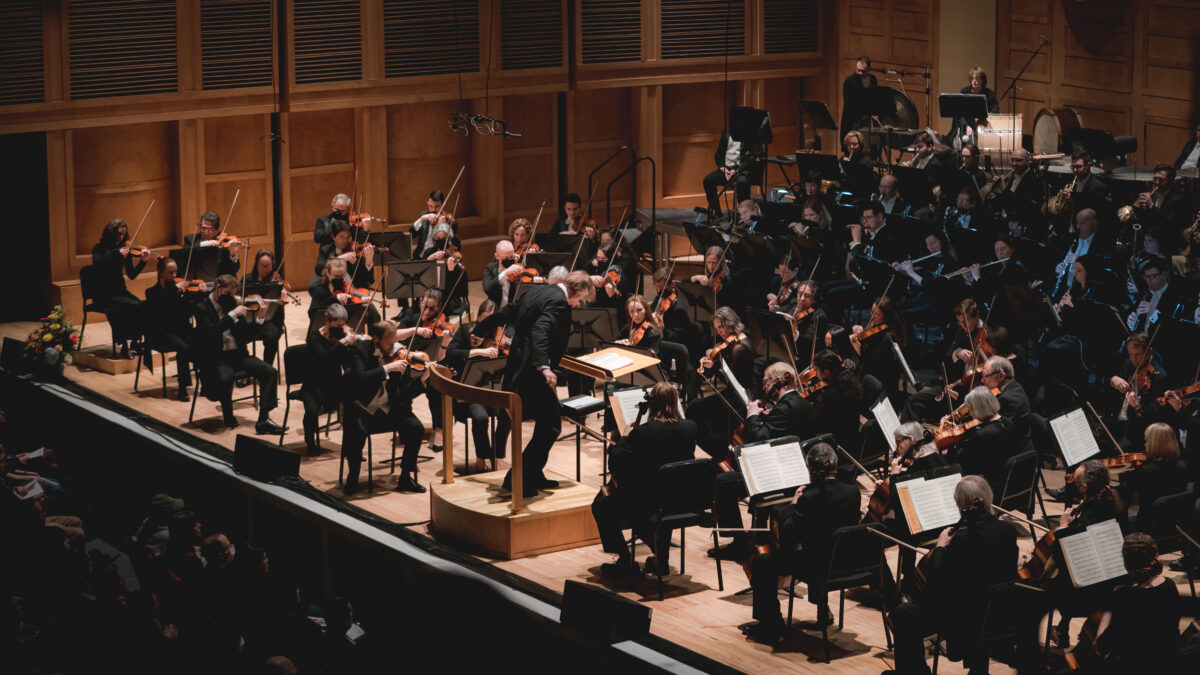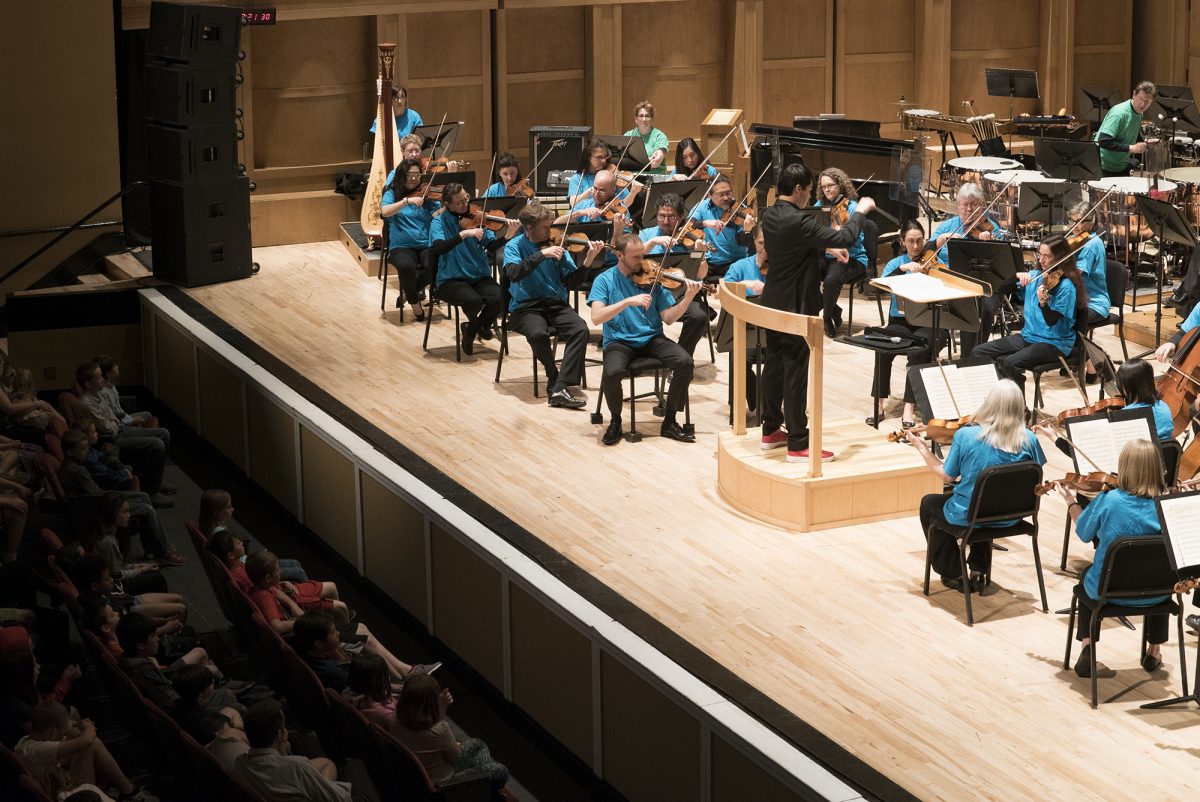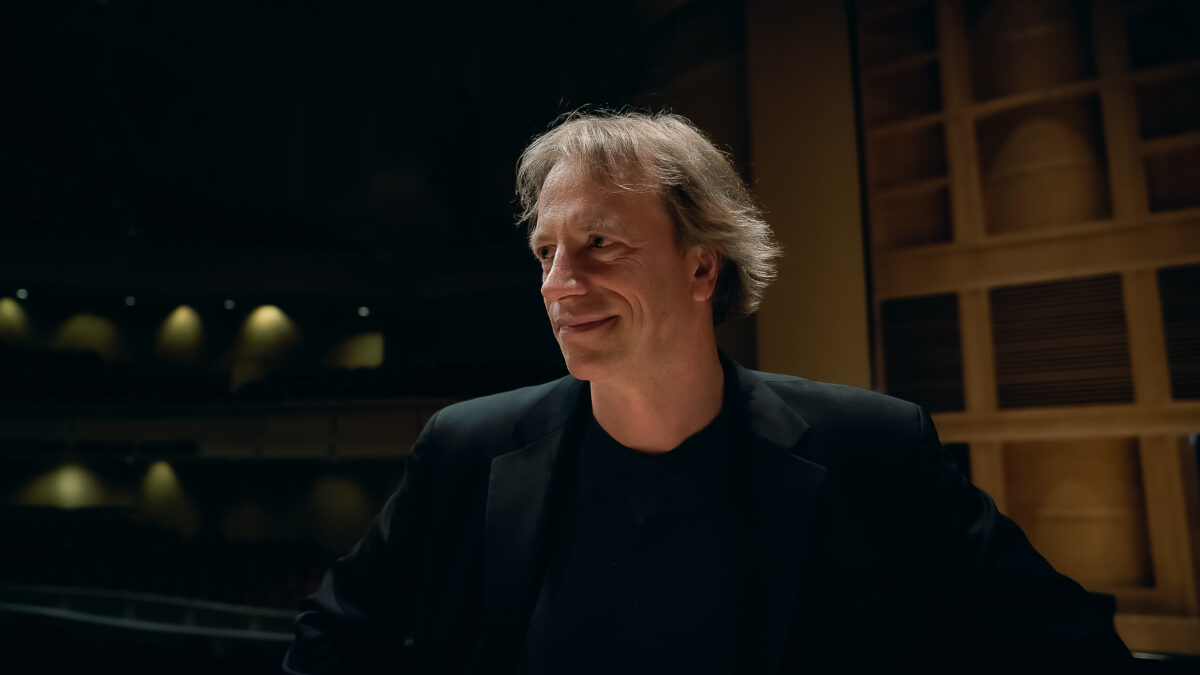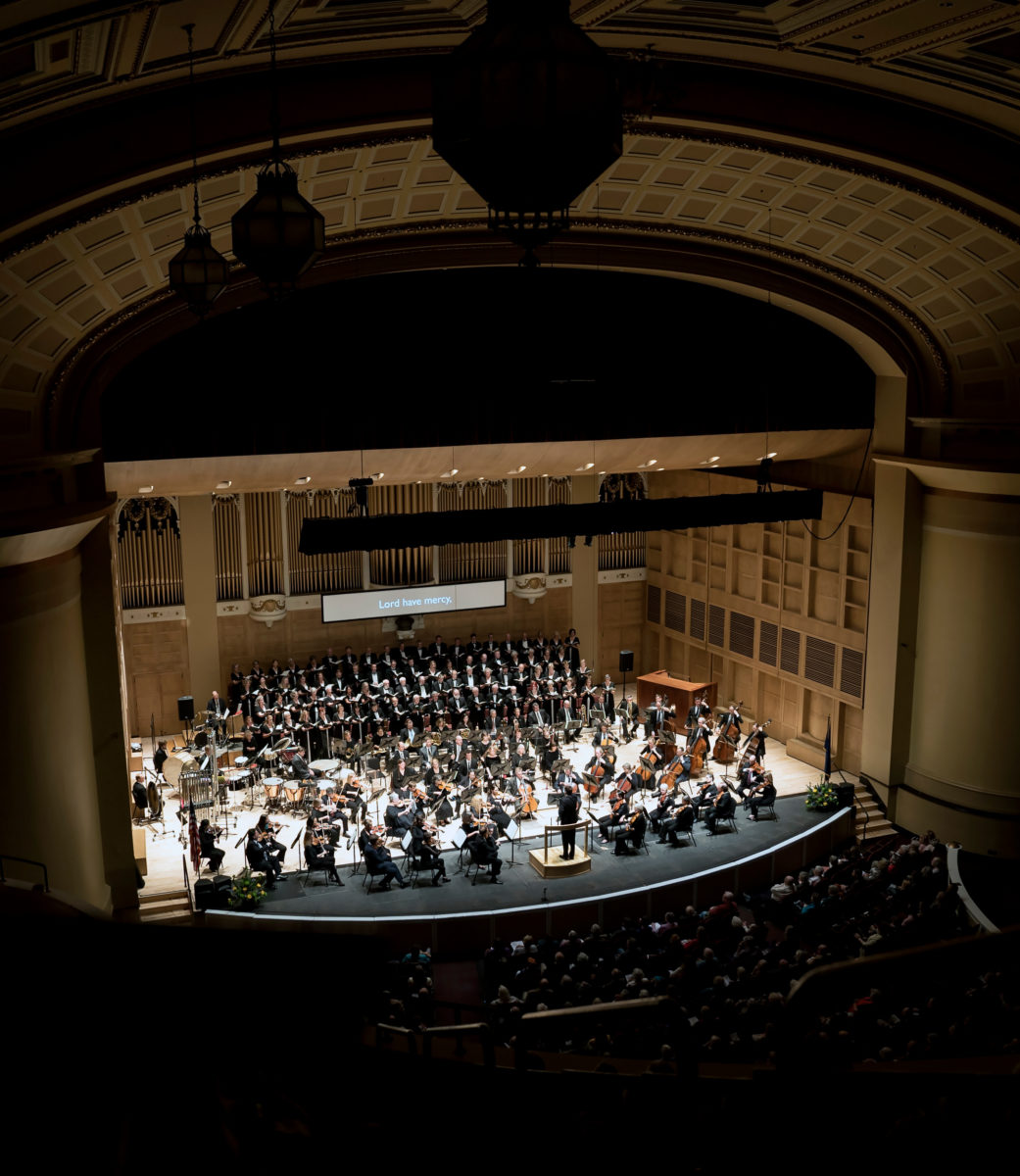The Schumann Circle Program Notes
Johannes Brahms
Tragic Overture in D minor, Op. 81
Johannes Brahms was born in Hamburg in 1833 and died in Vienna in 1897. He composed this overture in 1880, though some of the materials had been previously composed in 1869. Brahms revised the work in 1881. The work was given its first performance in 1880 by the Vienna Philharmonic under the direction of Hans Richter. The score calls for 3 flutes, piccolo, 2 oboes, 2 clarinets, 2 bassoons, 4 horns, 2 trumpets, 3 trombones, tuba, timpani, and strings.
*****
Brahms composed his Academic Festival Overture as a proper “thank you” for being awarded an honorary degree. His first thought had been to scribble his thanks on a postcard, but friends informed him that not only was he expected to compose a piece for the occasion, but to actually attend the ceremony, as well! Comprised as it is of student drinking songs, the Academic Festival Overture was as frivolous as Brahms ever got, and afterward he felt the intense desire to return to his gloomy ways in his Tragic Overture: “I could not refuse my melancholy nature the satisfaction of composing an overture for a tragedy.” Brahms didn’t have a literary tragedy in mind, nor did he even like the title Tragic Overture very much—he simply couldn’t think of a better one.
After two sharp chords the overture continues in a free sonata form—the opening theme is developed rather extensively before we hear the contrasting lyrical second theme. The third theme we hear before the development is one he had composed years before. After the short development the themes return in reverse order. Of his two concert overtures Brahms remarked, “One laughs, the other weeps”—and there you have it.
*****
Clara Wieck Schumann
Concerto for Piano & Orchestra in A minor, Op. 7
Clara Wieck Schumann was born in Leipzig in 1819 and died in Frankfurt in 1896. She originally composed the last movement of this work as a konzertsatz, a one-movement work for piano and orchestra in 1833. Robert Schumann orchestrated this movement. She later used the piece as the Finale of this concerto, composing the first two movements in 1833-1834. She was the first soloist at the premiere performance at the Leipzig Gewandhaus in 1835 under the direction of Felix Mendelssohn. The concerto is scored for solo piano, 2 flutes, 2 oboes, 2 clarinets, 2 bassoons, 2 horns, 2 trumpets, trombone, timpani, and strings.
*****
When Clara Wieck married Robert Schumann she was a world-renowned pianist, while hardly anyone had ever heard of her new husband. She had been raised by her domineering father, a piano teacher and piano salesman who, for an hour each day, taught her piano, violin, voice, theory, harmony, counterpoint, and composition. She was expected to practice for two hours afterwards. He introduced her to the leading lights of music as they passed through Leipzig, took her to every kind of musical performance, managed her career as a pianist, and accompanied her on her tours.
He also bitterly opposed the marriage. Robert Schumann had been his student, too, and Clara’s father opposed the match because of his drinking, mental instability, and his lack of any visible means of support. No doubt he also opposed their marrying because it would have thrown a wrench into the carefully planned career he had plotted for his daughter. He refused permission for them to marry, to the point where the couple had to appeal to the courts to intervene. After a protracted and acrimonious legal battle the couple were married a day before Clara’s 21st birthday. (They had to sue to get Clara’s piano out of her father’s house, too.)
Clara continued her composing and her concert career, as indeed she had to, for she was the breadwinner of the family. She personally managed her own career, and increasingly managed Robert’s as well. Eventually, after having had eight children, she all but ceased composing—there simply was not enough time in the day. She wrote, “I once believed that I possessed creative talent, but I have given up this idea; a woman must not desire to compose—there has never yet been one able to do it. Should I expect to be the one?” She composed 66 works altogether, including much piano music, songs, the piano concerto, a piano trio, and works for chorus.
She began this concerto at the age of 13. She composed it originally as a konzertsatz, a one-movement work. (This movement was orchestrated by Robert, then a student in her father’s house.) She later expanded it to three movements that are connected without pause, orchestrating the new movements herself.
It is a stunning achievement for a teenager, even in a world that contained a Felix Mendelssohn (who conducted the premiere). The forms of the Concerto are Clara’s own—they do not fit easily into standard classifications. The first movement is a fantasy-like theme and variations, the second is a Romanze scored for piano and cello alone, and the Finale begins sounding very much like a polonaise, but turns out more like a rondo. Her gift for lyricism shines through it all, along with immense power and virtuosity. The Romanze is simply sublime, and the encroachment of the timpani near the transition to the Finale a masterful touch. In all, it makes us long for more; sadly, there could be none, and we are the poorer for it.
*****
Robert Schumann
Symphony No. 3 in E-flat major, Op. 97, “Rhenish”
Robert Schumann was born in Zwickau, Germany in 1810 and died at Endenich, Germany in 1856. He composed his Third Symphony in 1850 and conducted the first performance in Düsseldorf the following year. The symphony is scored for 2 flutes, 2 oboes, 2 clarinets, 2 bassoons, 4 horns, 2 trumpets, 3 trombones, timpani, and strings.
*****
In 1850, Schumann was appointed the municipal music director of Düsseldorf. He was glad to be gone from Dresden: it was a fine city for music, but he and his wife Clara had found the place and its people oppressive. Having moved to the Rhineland for the first time, he celebrated his fresh start with his “Rhenish” Symphony.
He completed the work in five weeks, having begun it soon after his arrival in Düsseldorf. The symphony was written to a program, but Schumann preferred to keep the details to himself. Clara’s diaries seem to say that the work as a whole is an impression of folk life on the Rhine. We do have some clues about the second and fourth movements, but otherwise we are hearing a story without being told the plot.
The symphony opens with an exuberant theme full of rhythmic tension. The score shows that the music is in a fast 3/4 time, but the first few measures of the music don’t sound that way. Instead, we hear a slower, broader three, because that’s the way the melody moves: Schumann has elided two bars of the fast 3/4 into one bar of a slower 3/2. This is called hemiola—a rhythm that goes counter to what the meter implies—and the surprise comes when Schumann allows the theme to slip back into the fast three as it continues, keeping things lively and deliciously off-balance. The second theme of the movement is given such short-shrift you would be forgiven if you thought there wasn’t one; the first theme dominates, and its most prominent interval, the fourth, reappears throughout the symphony, becoming the glue that holds the whole work together.
Schumann called the second movement “Morning on the Rhine,” but withdrew the title before the first performance. As its one-time title implies, this is a much gentler piece than the usual scherzo—actually, it’s much more akin to the folk-dance ländler.
The third movement seems like a calm, tuneful intermezzo; it is followed by the symphony’s true adagio, originally titled “In the manner of an accompaniment to a solemn ceremony.” Soon after their arrival in Düsseldorf the Schumanns attended the installation of a new archbishop at the Cologne cathedral. Schumann was impressed both by the edifice—an awe-inspiring sight, even in its unfinished state—and by the ceremony itself. In this movement, Schumann finally deploys the trombones—held in reserve until now—to play the opening theme. (Though Beethoven had used trombones in a symphony some years before, they were still strongly associated with church music.) This theme opens up with the air of a wide, limitless space, and a polyphonic texture evocative of ageless sacred music.
The Finale is cheerful, lighthearted, and rhythmically alive. Near the end comes a transformation of the fourth movement’s music, and allusions to the first movement as well.
The long-standing critical opinion of Schumann was that he was at his best composing songs and piano music, but that his lack of development skill and his casual dismissal of inherited symphonic forms make his symphonies less worthy. The received wisdom is right, as far as it goes: Schumann was clearly better at writing a good tune than developing it, and he invariably tailored his forms to suit those tunes, rather than the other way around. But most music lovers (as opposed to critics) hold those very “flaws” to be virtues, and find works like the “Rhenish” Symphony to be lively, fresh, and utterly enjoyable.
—Mark Rohr
Questions or comments?
markrohrprogramnotes@gmail.com





